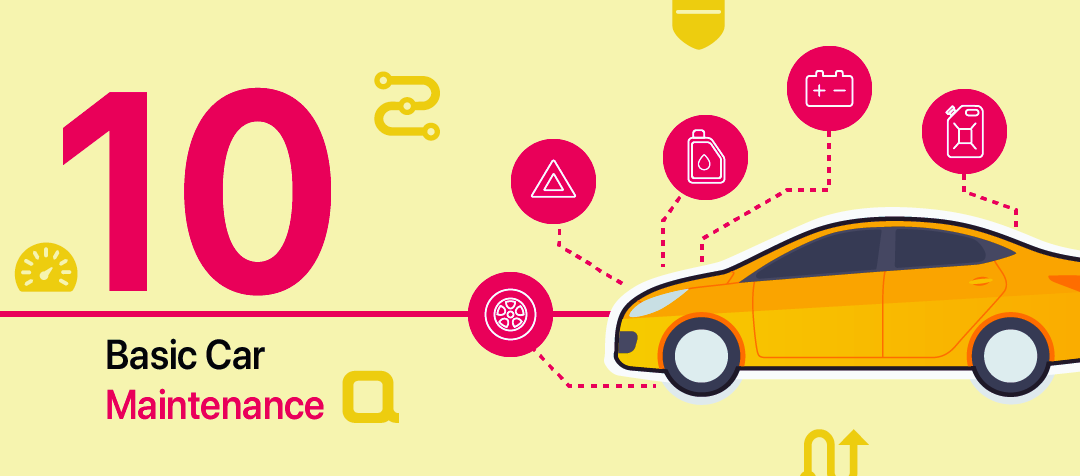Introduction:
Car maintenance is essential for keeping your vehicle in optimal condition, ensuring its longevity, and preventing costly repairs. For beginners, taking care of a car may seem overwhelming, but with a little knowledge and regular upkeep, anyone can maintain their vehicle effectively.
In this guide, we’ll cover essential car maintenance tips for beginners, breaking down key tasks that are simple, manageable, and crucial for the health of your car.
1. Understanding Your Vehicle’s Owner Manual
Before diving into any car maintenance tasks, it’s crucial to familiarize yourself with your vehicle’s owner manual. Every car is different, and the owner manual provides specific details regarding your car’s maintenance schedule, types of fluids to use, and instructions on operating various components.
The manual will also give you a clear understanding of your car’s warranty, which is important to ensure you don’t void it by performing unauthorized repairs.
Tip: Store your owner manual in your glove compartment so it’s always on hand when you need it.
2. Regularly Check and Change Engine Oil
The engine oil is the lifeblood of your car, ensuring that all moving parts operate smoothly. Regular oil changes prevent wear and tear on the engine, improve fuel efficiency, and extend the life of your vehicle. It’s one of the most critical car maintenance tasks, and it’s also fairly simple to monitor.
Steps to Check Engine Oil:
- Park your car on a level surface and turn off the engine.
- Pull out the oil dipstick, wipe it clean, then insert it back in and pull it out again.
- Check the oil level; it should be between the minimum and maximum marks.
- If the oil is low, add the correct type of oil as specified in your owner manual.
Typically, oil should be changed every 3,000 to 5,000 miles, depending on your driving habits and your car’s make and model. Many modern vehicles have oil life monitoring systems that alert you when it’s time for an oil change.
Pro Tip: Use high-quality oil and the correct viscosity for your car as outlined in the manual.
3. Check Tire Pressure and Tread Depth
Maintaining proper tire pressure is crucial for vehicle safety, fuel efficiency, and preventing tire wear. Driving with under-inflated tires can lead to poor handling and even blowouts, while over-inflated tires may wear unevenly.
How to Check Tire Pressure:
- Purchase a reliable tire pressure gauge (or use the gauge at a gas station).
- Refer to your owner manual or the label inside your driver-side door for the recommended tire pressure.
- Check the tire pressure when the tires are cold (before driving).
- Add or release air as necessary using an air compressor.
Besides pressure, you should also inspect the tread depth to ensure your tires are gripping the road properly. You can use a penny to check the tread: Insert the penny into the tire tread with Lincoln’s head upside down. If you can see the top of Lincoln’s head, it’s time to replace the tire.
Tip: Rotate your tires every 5,000 to 7,500 miles to ensure even wear and extend their lifespan.
4. Inspect and Replace Air Filters
Air filters keep dirt and debris from entering your engine, which helps maintain performance and fuel efficiency. Over time, these filters become clogged and need to be replaced.
Most car manufacturers recommend replacing the air filter every 12,000 to 15,000 miles, or once a year. However, if you drive in dusty conditions or areas with heavy traffic, you may need to change it more frequently.
Steps to Replace Air Filter:
- Locate the air filter box (usually near the engine).
- Open the box and remove the old filter.
- Place the new filter in the same orientation as the old one.
- Close the box securely.
A clean air filter improves fuel efficiency and ensures that your engine runs smoothly.
5. Keep an Eye on Your Brakes
Your car’s braking system is arguably the most important safety feature. If you notice any squealing, grinding, or if your brake pedal feels soft, it’s time to inspect the brakes. Brake pads typically need to be replaced every 25,000 to 70,000 miles, depending on the make and model of your car and your driving habits.
Signs Your Brakes Need Attention:
- Squealing or grinding noises.
- Vibration or pulsation when braking.
- A burning smell after heavy braking.
- The car pulls to one side when braking.
If you’re unsure about the state of your brakes, it’s best to have a professional mechanic inspect them.
6. Monitor Coolant Levels
The coolant (or antifreeze) prevents your engine from overheating by regulating temperature and preventing corrosion inside the cooling system. Without enough coolant, your car could overheat, leading to engine damage.
How to Check Coolant:
- Ensure the engine is cool before opening the radiator cap.
- Locate the coolant reservoir and check if the fluid level is between the minimum and maximum marks.
- Top up the coolant if necessary, following the guidelines in your manual.
It’s also important to have your cooling system flushed and refilled at the intervals recommended in your owner’s manual.
7. Change Windshield Wipers
Windshield wipers are essential for clear visibility during rain, snow, or dusty conditions. Over time, wiper blades can wear out, leading to streaking and reduced effectiveness. Replacing wiper blades is a quick and easy task that can greatly improve your driving safety.
How to Replace Windshield Wipers:
- Lift the wiper arm away from the windshield.
- Press the small tab on the underside of the wiper to release it from the arm.
- Slide the new wiper into place until it clicks.
It’s recommended to replace windshield wipers every 6 to 12 months or as soon as you notice they aren’t clearing the windshield effectively.
8. Inspect Battery and Cables
A car’s battery powers everything from the ignition system to the lights. Regular inspection ensures it’s in good condition and prevents you from being stranded with a dead battery. On average, a car battery lasts about 3 to 5 years, but you should check it periodically to ensure it’s charging properly.
Battery Maintenance Tips:
- Inspect for corrosion on the terminals (white or blue residue).
- Clean the terminals with a mixture of baking soda and water if you notice any buildup.
- Make sure the battery is securely fastened to prevent vibrations from damaging it.
You can also have a mechanic check the battery’s charge level, especially before long trips or extreme weather conditions.
9. Replace Spark Plugs
Spark plugs ignite the air-fuel mixture in your car’s engine, and over time, they can wear out or become fouled. Worn spark plugs can lead to poor fuel economy, rough idling, or difficulty starting the engine.
Most cars require spark plug replacement every 30,000 to 100,000 miles, depending on the type of spark plug and vehicle. Always consult your manual for the recommended interval.
Tip: Replacing spark plugs is a bit more complex, so if you’re not comfortable doing it yourself, consider having a mechanic handle the task.
10. Keep an Emergency Kit in Your Car
In addition to regular maintenance, being prepared for emergencies is crucial for every car owner. Keep an emergency kit in your car that includes:
- A first aid kit.
- Jumper cables.
- A flashlight with extra batteries.
- A tire pressure gauge.
- A spare tire, jack, and lug wrench.
- Basic tools like screwdrivers and pliers.
Having these items on hand can make a big difference if you encounter a breakdown or other issues on the road.
Conclusion
Regular car maintenance is the key to keeping your vehicle running smoothly and safely. By following these simple tips, beginners can stay on top of essential tasks like checking oil, monitoring tire pressure, inspecting brakes, and replacing air filters.
Remember that proactive care will save you time and money in the long run, preventing costly repairs and ensuring a reliable, safe driving experience.
Always consult your vehicle’s owner manual for specific recommendations and intervals for maintenance. Whether you choose to handle some of the tasks yourself or visit a professional mechanic, regular upkeep is the best way to ensure the longevity of your car.








